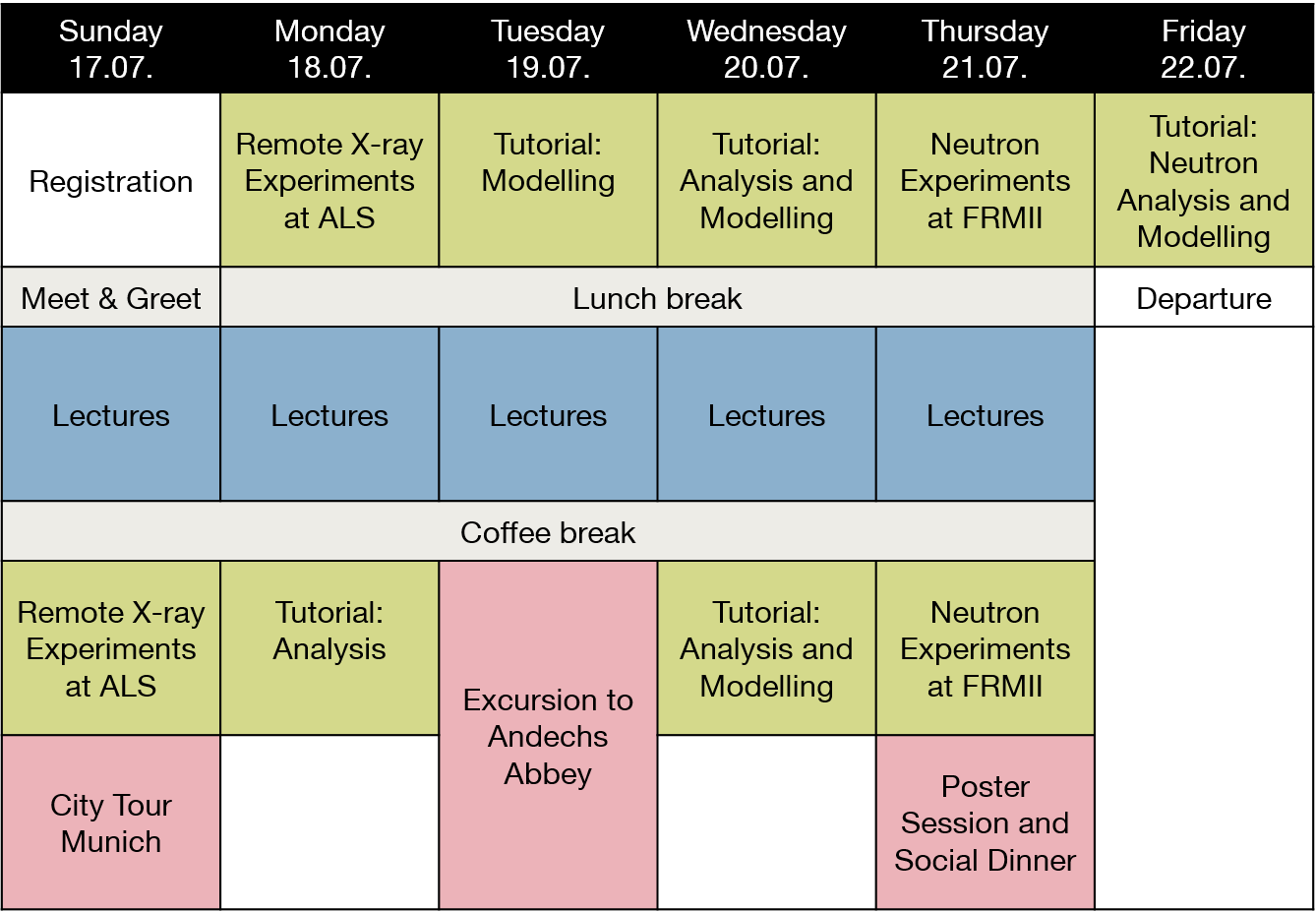Lectures & Experiments
The school consists of different modules in the form of lectures, experiments and analysis.
Every student is expected to prepare their own sample set. This will then be the basis for your own experiments which each student will be measured and subsequently analysed during the summer school. To apply for the school a short mini-proposal for the sample system you will post in advance and work on during the summer school is required.
For the school itself it is important that each student brings their own laptop. You will then be able to install the necessary tools and are already set for working once you return to your institution.
We will have a poster session on Thursday evening on 21st of July. You will shortly present your work, so please bring a poster explaining your project as well. The poster should be in A0 format.
We will start with basic lectures on grazing incidence scattering theory, followed by a guided session on selecting the experimental parameters for your own system. We will then remotely run experiments at the ALS, USA and start with the data analysis as well as data modelling. These practical modules will be embedded in lectures on resonant scattering and time-resolved measurements and viewpoints from industry as well as information sessions on proposal writing for beamtimes.
Additionally we will carry out a few selected neutron experiments on site at the FRM II. Even if your own sample is not measured at the reactor this will give you first hand experience at a beamline.
For acceptance to the summer school it is important to carefully fill in the mini-proposal form using the "submit contribution" button and to make sure your sample fulfills the given requirements.

Information on experiments:
Each student can measure up to 10 x-ray samples. It is possible to submit more than one mini-proposal, if you wish to measure, say 2 sets of 5 samples. Please provide as much information as possible about your samples since some of the measurements will already be carried out in advance. The accessible d-spacing for GISAXS is ~4 - 200 nm, for GIWAXS: ~ 0.3 - 3 nm and GISANS: ~ 2.5 - 60 nm. There is overall only a small number of GISANS measurements possible, therefore no large sample sets can be accepted for GISANS and mini-proposals will be evaluated less quickly than for GISAXS. We therefore recommend the submission of GISAXS samples for every student.